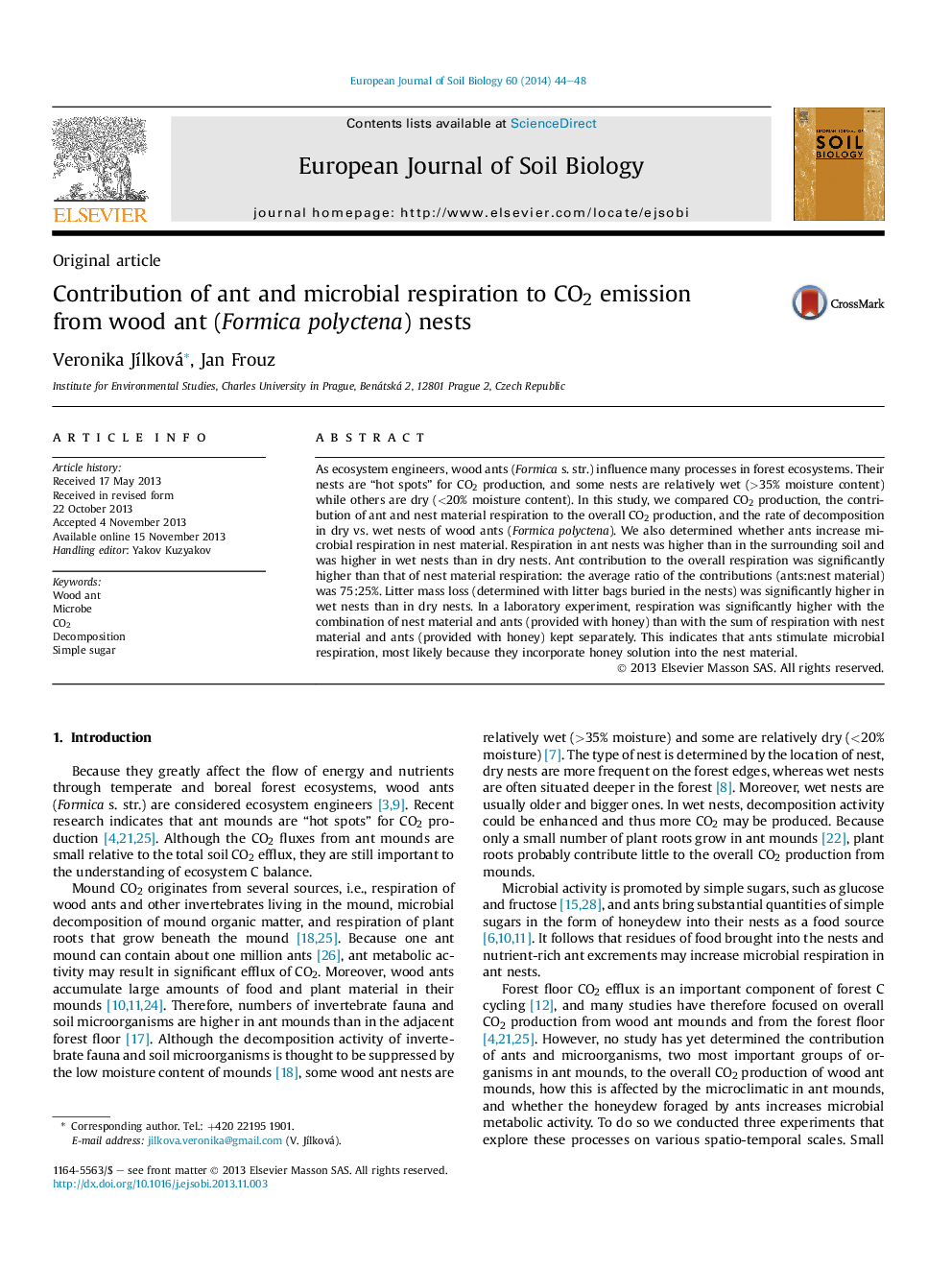| کد مقاله | کد نشریه | سال انتشار | مقاله انگلیسی | نسخه تمام متن |
|---|---|---|---|---|
| 4391899 | 1618132 | 2014 | 5 صفحه PDF | دانلود رایگان |

• Ant respiration is the main source of CO2 emissions from wood ant nests.
• Microbial respiration is strongly affected by the water content and honeydew input.
• Wet wood ant nests represent “hot spots” of litter decomposition.
As ecosystem engineers, wood ants (Formica s. str.) influence many processes in forest ecosystems. Their nests are “hot spots” for CO2 production, and some nests are relatively wet (>35% moisture content) while others are dry (<20% moisture content). In this study, we compared CO2 production, the contribution of ant and nest material respiration to the overall CO2 production, and the rate of decomposition in dry vs. wet nests of wood ants (Formica polyctena). We also determined whether ants increase microbial respiration in nest material. Respiration in ant nests was higher than in the surrounding soil and was higher in wet nests than in dry nests. Ant contribution to the overall respiration was significantly higher than that of nest material respiration: the average ratio of the contributions (ants:nest material) was 75:25%. Litter mass loss (determined with litter bags buried in the nests) was significantly higher in wet nests than in dry nests. In a laboratory experiment, respiration was significantly higher with the combination of nest material and ants (provided with honey) than with the sum of respiration with nest material and ants (provided with honey) kept separately. This indicates that ants stimulate microbial respiration, most likely because they incorporate honey solution into the nest material.
Journal: European Journal of Soil Biology - Volume 60, January–February 2014, Pages 44–48